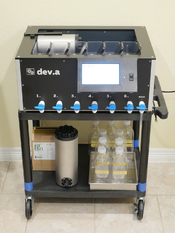Thank you.
I bought one of the first 20 Filmomats in 2017.
We drove to Munich to pick up the device and met Lukas Fritz, the designer, in person. It was a very interesting and pleasant meeting.
I've been working with the Filmomat ever since, with a break of a few years due to illness.
I can only agree with
@Doug Kaye completely.
The device is worth the money, built for professional use (= high throughput), and Lukas's support is exemplary.
If you take photos regularly and want perfect results when developing film, a Filmomat is an excellent choice.
Here's a review from back then; Lukas has since further developed the Filmomat, so this is a glimpse into the past.
I recently bought a copy of the still rare Filmomat. Dead Link Removed This machine is manufactured and distributed by a young guy in Munich/Germany. Located in Vienna/Austria I have tested it developing my very first color film and I am very satisfied with handling and results. This is my...

www.photrio.com














